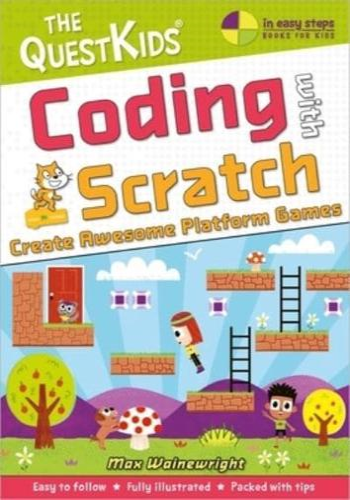Chapter 1: Scratch Basics
This chapter introduces Scratch's user interface, including the Stage, the Sprites, and the Script Editor. It also covers basic programming concepts like variables, loops, and events.
Example: Create a simple animation where a sprite moves across the screen when the green flag is clicked.
Chapter 2: Motion and Appearance
This chapter explores motion and appearance commands, including moving, rotating, changing size, and changing color. It also introduces the concept of coordinates and the use of the "x" and "y" values.
Example: Create a sprite that bounces off the edges of the screen and changes color each time it bounces.
Chapter 3: Sound and Events
This chapter focuses on sound effects and events. It covers how to play sounds, create custom sounds, and respond to user input like mouse clicks and key presses.
Example: Create a game where a sprite plays a different sound when it touches different areas of the screen.
Chapter 4: Control Flow
This chapter introduces control flow statements, such as If-Then statements, Else statements, and Repeat Until loops. These statements allow programs to make decisions and repeat actions multiple times.
Example: Create a maze game where the sprite can only move in certain directions based on the walls it encounters.
Chapter 5: Variables and Operators
This chapter explores variables and operators. Variables store data, and operators perform actions on data. This allows programs to track information and perform calculations.
Example: Create a scorekeeping system for a game where the player's score is updated every time they collect an item.
Chapter 6: Lists and Broadcasting
This chapter introduces lists and broadcasting. Lists store collections of data, and broadcasting allows sprites to communicate with each other by sending and receiving messages.
Example: Create a game where multiple sprites interact with each other by broadcasting messages when they collide.
Chapter 7: Custom Blocks and Functions
This chapter introduces custom blocks and functions. Custom blocks allow users to create their own reusable code blocks, while functions perform specific tasks and can be called from within other scripts.
Example: Create a custom block that makes a sprite move in a circle. Then, use a function to call this block multiple times to create a more complex animation.
Chapter 8: Data Structures
This chapter explores data structures, such as arrays, queues, and linked lists. These structures help organize and store data efficiently.
Example: Create a queue to simulate a line of people waiting for a service.
Chapter 9: OOP in Scratch
This chapter introduces object-oriented programming (OOP) concepts in Scratch. It covers classes, objects, and methods, which allow for more organized and reusable code.
Example: Create a class for representing different types of characters in a role-playing game. Then, create objects of these characters and assign them different properties and abilities.







